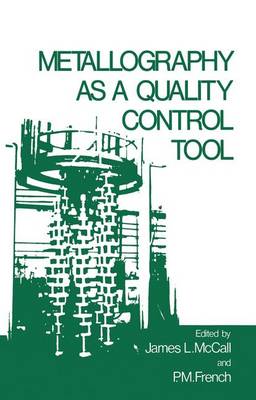Qual ity control has been described as a system for verifying and maintaining a desired level of quality in a product or process by careful planning, continued inspec tion, and corrective action where required. With many of today's products, there is an ever increasing demand for improved reliability during service. This in turn ne cessitates the use of a wide range of control techniques - some very sophisticated and complex - not only to verify the quality of the final product but also to moni tor that the fabrication processes are under control. Furthermore, with certain in dustries, quality control of the final product is of paramount importance because of the needs for its reliable and safe operation under arduous and sometimes dangerous conditions. Metallography often serves as an invaluable quality control tool and can provide information not normally attainable by more conventional procedures. It often supplements both destructive techniques, e. g. , mechanical testing, as well as non-destructive procedures, e. g. , as radiography, ultrasonic testing, and dye-penetrant inspection. Furthermore, metallographic inspection utilizes a wide range of tech niques ranging from conventional optical microscopy to more sophisticated procedures such as scanning electron microscopy, X-ray spectroscopy, and Auger electron spec troscopy. In some industries, metallography also is employed during maintenance, field inspection, and overhaul of components.
- ISBN13 9781461330929
- Publish Date 13 October 2011 (first published 1 May 1980)
- Publish Status Active
- Publish Country US
- Imprint Springer-Verlag New York Inc.
- Edition Softcover reprint of the original 1st ed. 1980
- Format Paperback
- Pages 338
- Language English
